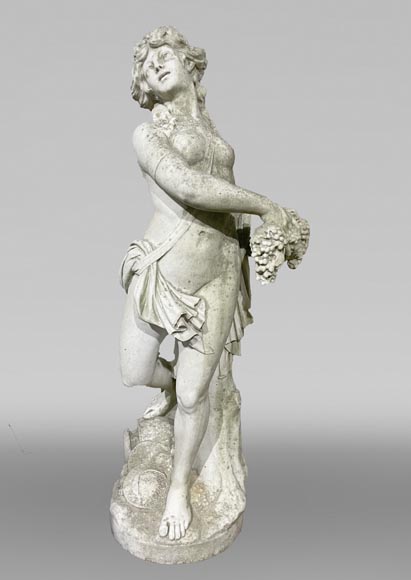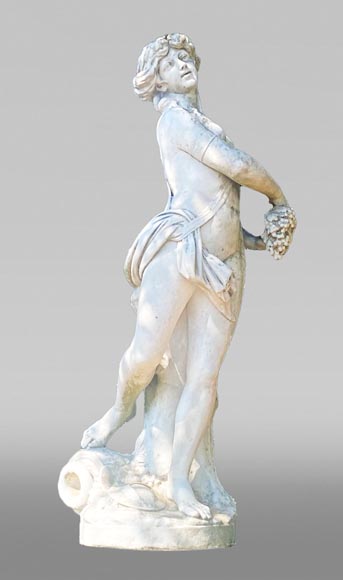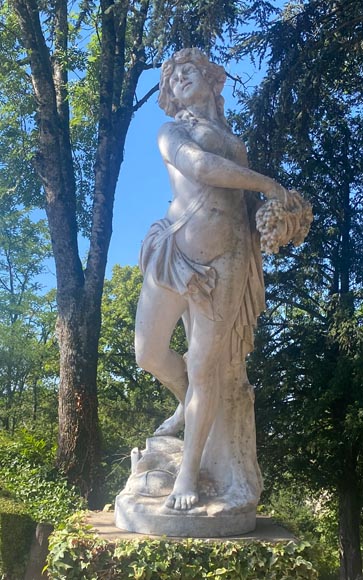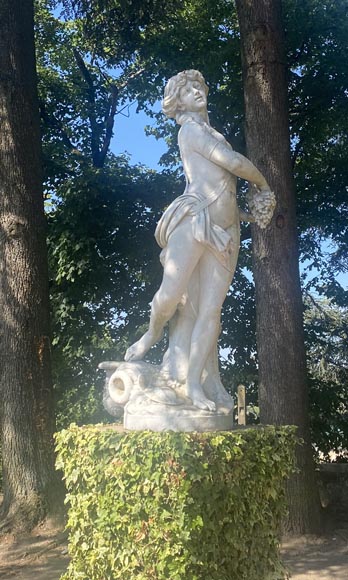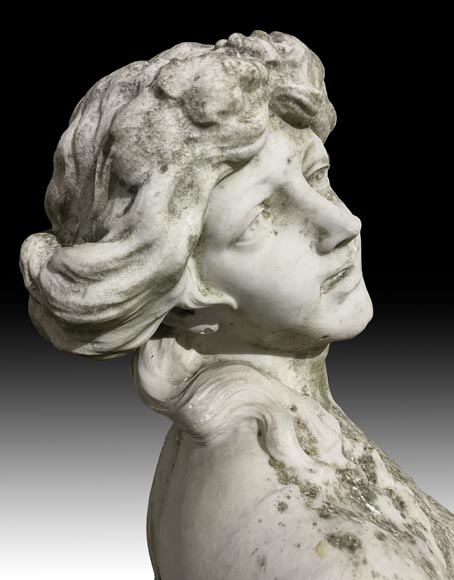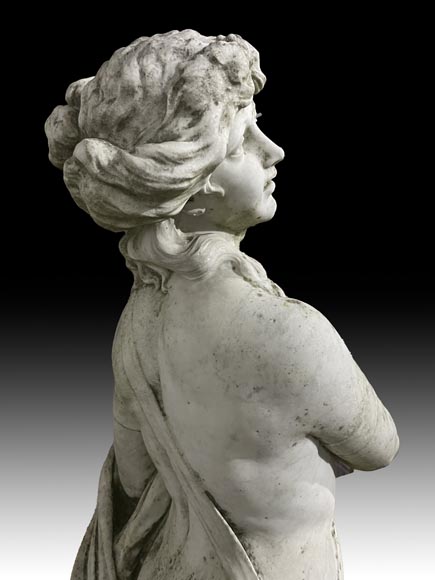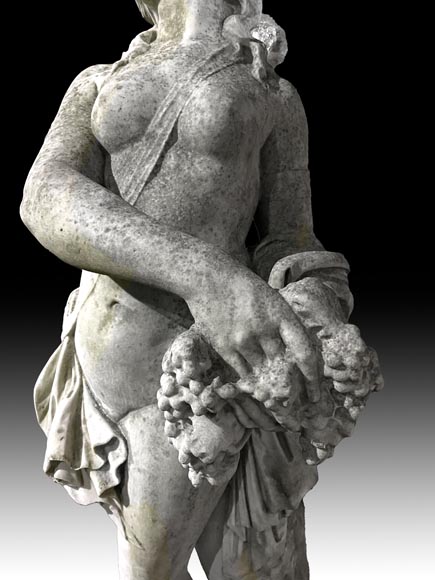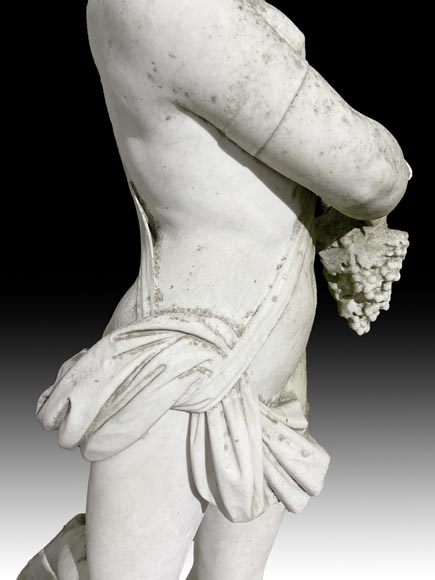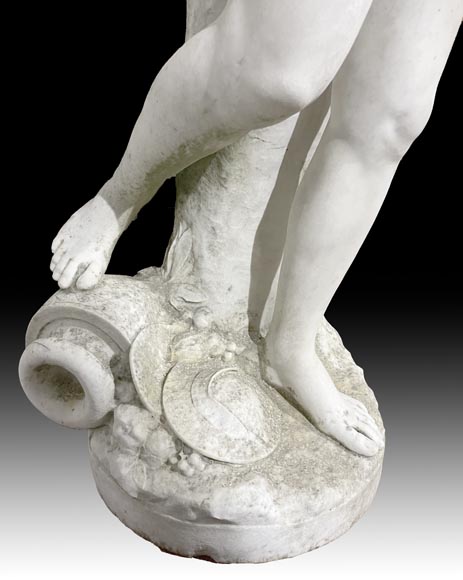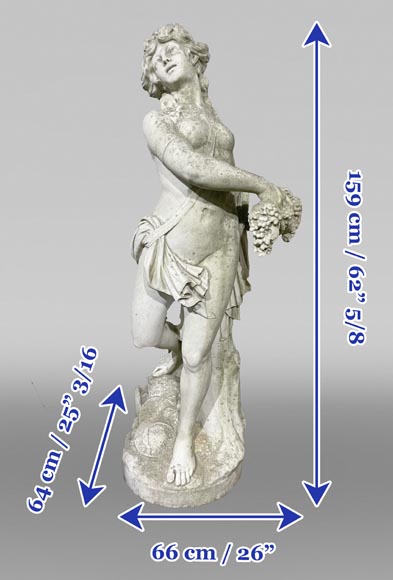Style Louis XVI / Ref.15160
Claude MICHEL, known as CLODION (after), Bacchante, late 19th Century
Dimensions
Width 26'' 66cm
Height 62'' ⅝ 159cm
Depth: 25'' ¼ 64cm
Origin:
France, 19th century
Status:
As it stands
This marble sculpture of a bacchante was executed in the 19th century after a model attributed to Clodion. The sculptor Claude Michel, known as Clodion (1738-1814), was descended on his mother’s side from the Adam dynasty, a family of renowned sculptors throughout the 18th century. He learned sculpture at the model school of the French Royal Academy of Painting and Sculpture; in 1759, upon the death of his uncle Lambert Sigisbert Adam, who probably contributed to his training, he became a student of Jean-Baptiste Pigalle. He was a resident of the Royal School of Protected Students and stayed at the French Academy in Rome. He enjoyed his Roman stay so much that he extended it for several years before returning in 1773-1774. Highly appreciated under the reign of Louis XVI, Clodion had a particular fondness for mythological subjects.
Our sculpture represents a young woman walking, holding bunches of grapes in her hand. Her whole body, in a twist, forms an arc: her head is raised to her right while the top of her torso, led by her right arm, turns to her left; finally, her left leg faces the viewer, while her right leg, slightly bent, seems to hold her back on that side. She can be likened to a figure of a maenad or bacchante. Indeed, her exalted expression, flowing hair, dancing gait, and nudity just barely covered by a drape held by a strap bring her closer to this image. Furthermore, she carries bunches of grapes, a quintessential Bacchic symbol, while others have fallen at her feet; an overturned amphora perhaps symbolizes the intemperance characteristic of the Dionysian world. The sculptor paid great attention to the expression of her face, with its fine features, and to detail: the young woman notably wears bracelets on each arm that echo her strap; the amphora at her feet is adorned with a frieze of posts in low relief.
In ancient mythology, bacchantes were the priestesses of Bacchus who celebrated Dionysian mysteries and festivals, or the companions of the god, who marched with his retinue. Bacchantes were considered sensual and having an unrestrained sexuality; our sculpture, with its sensuality and dancing character, echoes this reputation.
This figure of a bacchante is attributed to Clodion. In fact, the sculptor executed several terracottas on this subject, including one titled Bacchante Running with Fruits in Her Tunic (circa 1780-1785, terracotta, private collection), and another Bacchante Running (between 1803 and 1804, terracotta, 38 × 15 × 18.5 cm, Paris, Cognacq-Jay Museum). Several bronze castings of this statue are known. This material particularly highlights the sensuality of the woman and all the details of the sculpture.
Informations
Price: on request
Recommended for you :
Dimensions:
Width: 66
Height: 161
Depth: 50
Diameter: 50
Dimensions:
Height: 117
Diameter: 135
Dimensions:
Width: 60
Height: 172
Depth: 57
Dimensions:
Width: 186
Height: 226
Depth: 121
Dimensions:
Height: 128
Depth: 79
Diameter: 55
Dimensions:
Width: 64
Height: 162
Dimensions:
Width: 67
Height: 95
Depth: 115
Dimensions:
Width: 76
Height: 75
Depth: 43
Dimensions:
Width: 149
Height: 82
Depth: 48
Dimensions:
Width: 188
Height: 315
Dimensions:
Width: 64
Height: 274
Depth: 64
Dimensions:
Width: 30
Height: 126
Depth: 74



